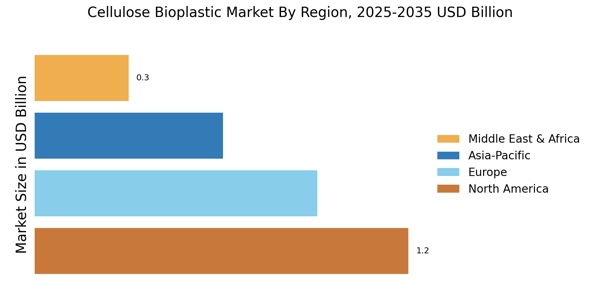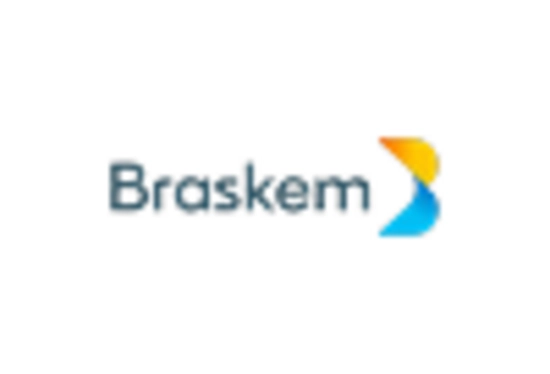Collaboration Across Industries
Collaboration across various industries is emerging as a key driver for the Cellulose Bioplastic Market. Partnerships between bioplastic manufacturers, research institutions, and end-users are fostering innovation and accelerating the development of cellulose bioplastics. These collaborations often focus on enhancing the performance characteristics of cellulose bioplastics, such as strength, flexibility, and barrier properties. For instance, joint ventures between packaging companies and biopolymer researchers are yielding new formulations that meet specific industry needs. This collaborative approach not only enhances product offerings but also facilitates knowledge sharing and resource optimization. As industries recognize the potential of cellulose bioplastics, the Cellulose Bioplastic Market is likely to experience accelerated growth, driven by collective efforts to create sustainable solutions.
Supportive Regulatory Frameworks
The Cellulose Bioplastic Market is benefiting from supportive regulatory frameworks that promote the use of biodegradable materials. Governments are increasingly implementing policies aimed at reducing plastic waste and encouraging the adoption of sustainable alternatives. For example, several countries have introduced incentives for manufacturers who utilize bioplastics, including tax breaks and grants for research initiatives. These regulations not only create a favorable environment for the growth of cellulose bioplastics but also stimulate investment in the sector. As regulations become more stringent regarding plastic usage, the demand for cellulose bioplastics is expected to rise, positioning the Cellulose Bioplastic Market as a viable solution to meet both consumer and regulatory expectations.
Innovations in Production Technologies
Technological advancements in the production of cellulose bioplastics are driving the Cellulose Bioplastic Market forward. Innovations such as improved extraction methods and processing techniques are enhancing the efficiency and cost-effectiveness of cellulose bioplastic production. For instance, the development of new enzymatic processes has the potential to reduce production costs by up to 30%, making cellulose bioplastics more competitive with conventional plastics. Furthermore, these advancements are likely to improve the material properties of cellulose bioplastics, expanding their applicability across various sectors, including automotive, consumer goods, and textiles. As production technologies continue to evolve, the Cellulose Bioplastic Market may witness an influx of new players, fostering a competitive landscape that encourages further innovation.
Rising Demand for Sustainable Packaging
The increasing consumer awareness regarding environmental issues has led to a rising demand for sustainable packaging solutions. The Cellulose Bioplastic Market is experiencing growth as businesses seek alternatives to traditional plastics. In 2025, the market for bioplastics is projected to reach approximately 2.5 million tons, with cellulose-based options gaining traction due to their biodegradability and renewable nature. This shift is not merely a trend but a fundamental change in consumer preferences, pushing manufacturers to innovate and adopt cellulose bioplastics in their packaging solutions. Companies are likely to invest in research and development to enhance the properties of cellulose bioplastics, making them more appealing for various applications. As sustainability becomes a core value for brands, the Cellulose Bioplastic Market is poised for significant expansion.
Consumer Preference for Eco-Friendly Products
There is a notable shift in consumer preferences towards eco-friendly products, which is significantly impacting the Cellulose Bioplastic Market. As consumers become more environmentally conscious, they are actively seeking products that align with their values. This trend is reflected in the increasing sales of products packaged in cellulose bioplastics, which are perceived as more sustainable compared to traditional plastic options. Market Research Future indicates that approximately 60% of consumers are willing to pay a premium for products that utilize biodegradable materials. This willingness to invest in eco-friendly alternatives is likely to drive manufacturers to incorporate cellulose bioplastics into their product lines, thereby expanding the market. The Cellulose Bioplastic Market stands to gain from this consumer-driven demand, fostering a more sustainable future.


















Leave a Comment